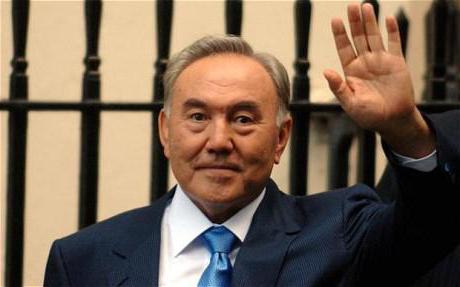When we hear about an authoritarian political regime, most people perceive this concept as purely negative. It is customary to mix authoritarianism and totalitarianism. But are these concepts really identical? Or is there still a significant difference between them? Let's find out what constitutes an authoritarian regime.

Definition of the term
An authoritarian political regime is an almost unlimited form of power of one person or group of people, while maintaining the appearance of some democratic institutions. Also, under it, part of the freedoms for the population in the economy, spiritual life, or in another sphere can be preserved if these freedoms do not threaten the regime itself.
In authoritarian states, the readiness of society itself to obey the authority of leaders or a dictator plays an important role.
Classification of Political Regimes
In order to understand the place of authoritarianism among other political regimes, it is necessary to pay attention to their classification. There are many types of forms of government. Three types dominate among them: authoritarian, totalitarian, democratic political regimes. In addition, anarchy, which is defined as anarchy, is singled out separately.
Democratic regime in an ideal form is characterized by the maximum participation of the people in government and in the succession of power. The totalitarian system, on the contrary, is marked by complete control of power over all areas of life and activity of citizens, which, in turn, do not take part in solving state issues. Moreover, power is often actually usurped by one person or a group of people from a narrow circle.
An authoritarian regime is a cross between a democratic and a totalitarian regime. Many political scientists present it as a compromise version of these systems. We will discuss further the features of authoritarianism and its differences from other political regimes.
Differences between authoritarian and democratic regimes
The authoritarian and democratic regimes have a lot of differences, but there are also common points between them.
The main difference between authoritarianism and democracy is that the people are actually detached from governing the country. Elections and referenda, if they are held, are purely formal in nature, since their results are deliberately predetermined.
At the same time, under authoritarianism there may be pluralism, that is, a multi-party system, as well as the preservation of democratic institutions that continue to function, which creates the illusion of governing the country by the people. This is precisely what makes the authoritarian and democratic political regime in common.
Differences between authoritarianism and totalitarianism
If the differences between authoritarianism and democracy are visible to the naked eye, then it is more difficult to distinguish it from totalitarianism. But still, totalitarian and authoritarian political regimes are significantly different from each other.
The main difference is that under authoritarianism, the basis of power is the personal qualities of a leader or group of leaders who have managed to capture the levers of government. Totalitarianism, on the contrary, is based on ideology. Often totalitarian leaders are put forward by the ruling elite, which can come to power even in a democratic way. Thus, under authoritarianism, the role of a leader is much higher than under totalitarianism.For example, an authoritarian regime may fall with the death of a leader, but only the general decline of the governance structure or military intervention of a third party can put an end to a totalitarian system.
As mentioned above, the totalitarian and authoritarian regimes differ also in the fact that the former often lacks democratic institutions, and under authoritarianism they can exist, although they have, by and large, a decorative function. Also, an authoritarian regime, in contrast to a totalitarian regime, can allow the functioning of various political parties, and even moderate opposition. But, nevertheless, real forces capable of harming the ruling regime, both under authoritarianism and under totalitarianism, are banned.

In addition, these two systems are also united by the fact that they lack real democracy and the ability of the people to govern the state.
Signs of an authoritarian system
The authoritarian regime of power has a number of features that distinguish it from other political systems. They allow to dissociate this type of government from other forms of government existing in the world. Below we will analyze the main features of an authoritarian regime.
One of the main features of this system is form of government in the form of autocracy, dictatorship or oligarchy. This implies the actual management of the state by one person or a limited group of persons. The access of ordinary citizens to this group is either completely impossible or substantially limited. This actually means that government is becoming beyond the control of the people. National elections, even if they take place, are purely nominal, with a predetermined outcome.
The authoritarian regime is also distinguished by the monopolization of government by one person or a certain political force. This allows you to actually control and manage all branches of government - executive, legislative and judicial. Most often, it is the representatives of the executive power who usurp the functions of other structures. In turn, this fact leads to increased corruption at the top of society, since in fact the governing and control bodies are represented by the same people.
Signs of an authoritarian political regime are expressed in the absence of real opposition. The authorities may allow the presence of a “manual” opposition, which acts as a screen designed to testify to the democratic nature of society. But in reality, such parties, on the contrary, strengthen the authoritarian regime even more by actually serving it. The same forces that are able to really confront the authorities are not allowed in the political struggle and are subjected to repression.
There are signs of an authoritarian regime in the economic sphere. First of all, they are expressed in the control of people in power and their relatives over the country's largest enterprises. In the hands of these people is concentrated not only political power, but also the management of financial flows, aimed at their personal enrichment. A person who does not have connections in the highest circles, even with good business qualities, has no chance of becoming financially successful, since the economy is monopolized by those who hold power. However, these features of the authoritarian regime are not a mandatory attribute.
In turn, in an authoritarian society, the country's leadership and members of their families are actually above the law. Their crimes are hushed up and go unpunished. Power structures of the country and law enforcement thoroughly corrupt and not controlled by society.
At the same time, an authoritarian state regime often refuses mass repression. Repressive actions are targeted in nature and they are aimed at specific individuals who have decided to oppose themselves to power.
Moreover, this system of power does not seek to completely control society. The authoritarian regime focuses on absolute political and significant economic control, and in the sphere of culture, religion and education provides significant freedoms.
In an authoritarian state, the protection of human rights and freedoms is declared, but in practice this doctrine is not respected.
The main method of governing the country, which is used under an authoritarian regime, is command and administrative.
Under authoritarianism, corruption often corrodes not only the elite of power, but the whole society.
It should be noted that in order to judge the management system as authoritarian, it is not necessary that all of the above characteristics are present. For this, a few of them are enough. At the same time, the existence of one of these signs does not automatically make the state authoritarian. In fact, there are no clear criteria by which a distinction can be made between authoritarianism and totalitarianism with democracy. But the presence in the state of most of the factors described above already confirms that the management system is authoritarian.
Classification of authoritarian regimes
Authoritarian systems in different countries can take many forms, often outwardly dissimilar to each other. In this regard, it is customary to divide them into several typological species. Among them are the following:
- absolutist monarchy;
- Sultanist regime;
- military bureaucratic regime;
- racial democracy;
- corporate authoritarianism;
- post-totalitarian regimes;
- postcolonial regimes;
- socialist authoritarianism.
In the future, we will dwell on each of the types presented above.
Absolutist Monarchy

This type of authoritarianism is inherent in modern absolute and dualistic monarchies. In such states, power is inherited. The monarch has either absolute authority to govern the country, or slightly limited.
The main examples of an authoritarian regime of this type are Nepal (until 2007), Ethiopia (until 1974), as well as the modern states of Saudi Arabia, Qatar, the UAE, Bahrain, Kuwait, Morocco. Moreover, the last country is not absolute monarchy but typical constitutional (dualistic). But, despite this, the power of the Sultan in Morocco is so strong that this country can be attributed to authoritarian states.
Sultanist regime
This type of authoritarian regime is so named because the power of the ruler in the countries where it is applied is comparable to the power of medieval sultans. Officially, the post of leader of such states may have different names, but in most known cases they held the presidency. In addition, under the sultanist regime, it is possible to transfer power by inheritance, although this is not enshrined in law. The most famous leaders of the countries dominated by this type of authoritarian regime were Saddam Hussein in Iraq, Rafael Trujillo in the Dominican Republic, Ferdinand Marcos in the Philippines, and Francois Duvalier in Haiti. The latter, by the way, managed to transfer power to his son Jean-Claude.
Sultanist regimes are characterized by a maximum concentration of power in one hand in comparison with other autocratic systems. Their distinguishing feature is the lack of ideology, the prohibition of a multi-party system, as well as absolute autocracy.
Military bureaucratic regime
A distinctive feature of this type of authoritarian regime is the seizure of power in the country by a group of military through a coup. At first, all power was concentrated in the hands of the military, but in the future, representatives of the bureaucracy became more and more involved in the administration. In the future, this type of governance may gradually take the path of democratization.

The main factors that lead to the establishment of military regimes are dissatisfaction with the current government and the fear of revolution "from below." It is the latter factor that further influences the limitation of democratic freedoms and the right to choose. Preventing the power of the intelligentsia, which is opposed to such a regime, is its main task.
The most typical representatives of this type of authoritarianism are the Nasser regime in Egypt, Pinochet in Chile, Peron in Argentina, the juntas of 1930 and 1969 in Brazil.
Racial democracy
Despite the fact that the word “democracy” is present in the name of this type of authoritarianism, this political regime provides freedom and rights only to representatives of a certain nationality or race. Other nationalities are not allowed to participate in the political process, including through violence.

The most typical example of racial democracy is South Africa during the apartheid period.
Corporate Authoritarianism
The corporate form of authoritarianism is considered its most typical form. It arises in societies with a relatively developed economy, in which various oligarchic groups (corporations) come to power. In such a state system, ideology is practically absent, and the economic and other interests of the group that came to power have a decisive role. As a rule, in states with corporate authoritarianism there is a multi-party system, but these parties cannot play a significant role in political life due to the apathy of society towards them.

This type of political regime has become most widespread in Latin America, in particular in Guatemala, Nicaragua (until 1979), and Cuba during the reign of Batista. There were also examples of corporate authoritarianism in Europe. Most clearly, this regime manifested itself in Portugal during the reign of Salazar and in Spain during the dictatorship of Franco.
Post-totalitarian regimes
This is a special type of authoritarian regimes that is formed in societies along the path from totalitarianism to democracy. Moreover, the phase of authoritarianism is not at all mandatory on this road, but it is inevitable in those former totalitarian countries where it was not possible to quickly build a full-fledged democratic society.
Post-totalitarian regimes are characterized by the concentration of significant economic assets in the hands of representatives of the former party nomenclature and people close to them, as well as the military elite. Thus, they turn into an oligarchy.

Typical representatives of post-totalitarian authoritarian regimes are the countries of the former USSR, except for the Baltic states.
Postcolonial regimes
As with post-totalitarian regimes, in many post-colonial countries, authoritarianism is a phase on the road to democracy. True, the development of these states often stops at this stage for many decades. As a rule, a similar form of power is established in countries with poorly developed economies and an imperfect political system.
Almost all African countries that gained independence in the second half of the 20th century belong to countries with postcolonial authoritarian regimes.
Socialist authoritarianism
This type of authoritarianism is manifested in the features of the development of socialist society in individual countries of the world. It is formed on the basis of a special perception of socialism within these states, which has nothing to do with the so-called European socialism or true social democracy.
In states with a similar form of government, there is a one-party system and there is no legal opposition. Often, countries with socialist authoritarianism have a pretty strong leadership role. In addition, quite often socialism is combined with nationalism in a mild form.
Among modern countries, socialist authoritarianism is most pronounced in Venezuela, Mozambique, Guinea, Tanzania.
general characteristics
As you can see, the authoritarian regime is a rather ambiguous form of government with no clear boundaries for definition. His place on the political map lies between the democratic and totalitarian system. The general characterization of an authoritarian regime can be voiced as a compromise between the two regimes.
Under an authoritarian regime, certain freedoms are allowed in relation to members of society, but as long as they do not threaten the ruling elite. As soon as a threat starts to come from a particular force, political repression is applied against it. But, unlike a totalitarian society, these repressions are not massive, but are applied selectively and narrowly.
However, many political scientists believe that authoritarianism for post-totalitarian societies and for countries with poorly developed economies and low levels of development of socio-political relations is the best option for a form of government.








